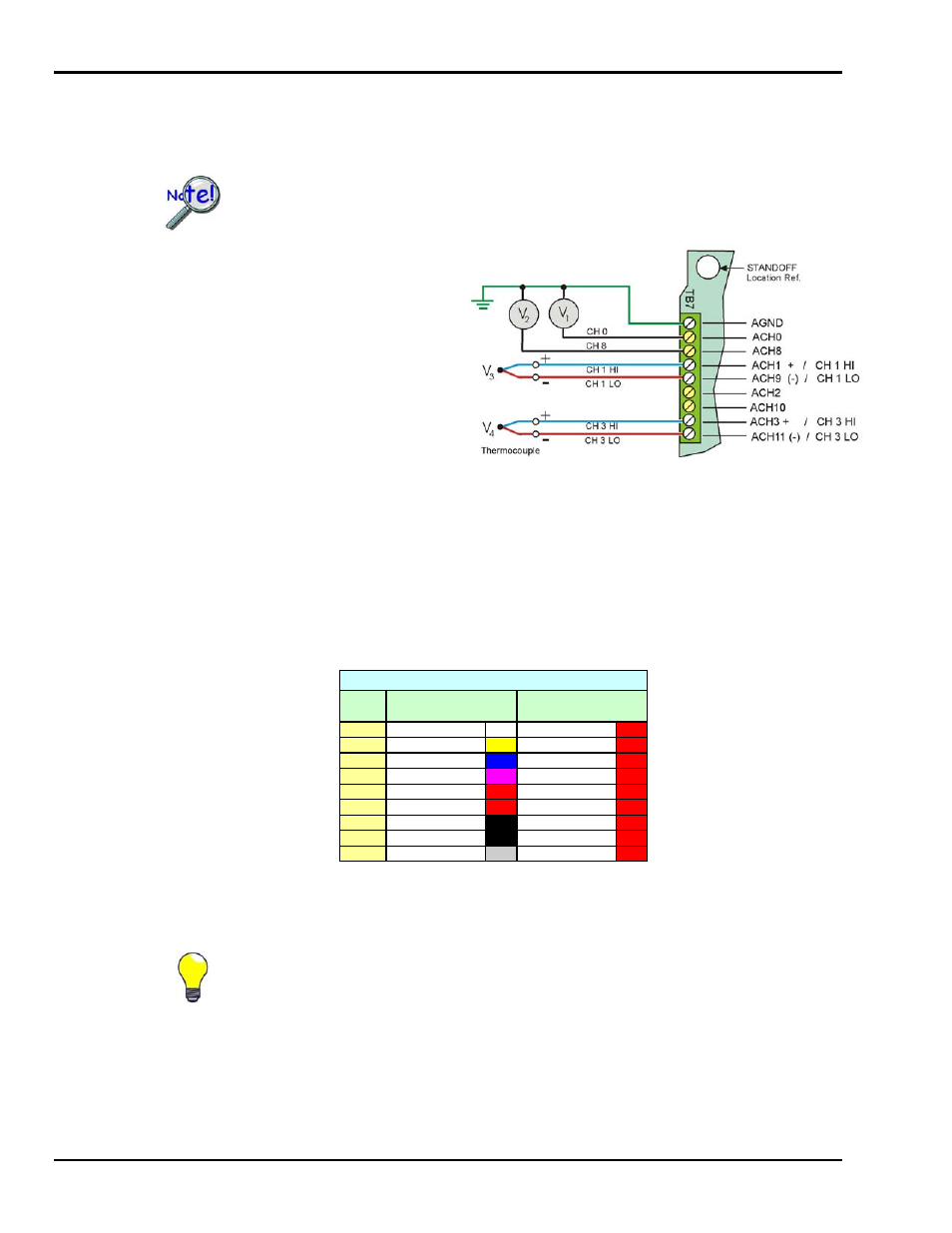Connecting thermocouples to screw terminal blocks – Measurement Computing DaqBoard 3000USB Series User Manual
Page 122

B-2 Signal Modes and System Noise
938390
Appendix B
Connecting Thermocouples to Screw Terminal Blocks
DaqBoard/3000USB Series boards can use single-ended or differential modes to measure voltage input; or
use differential mode to measure temperature. You can, of course, mix signal types, for example have some
channels connected to thermocouples and others connected to voltage signals.
In DaqBoard/3000USB Series applications, thermocouples must be connected
differentially. Failure to do so will result in false readings.
DaqBoard/3000USB Series devices do not have open thermocouple detection.
Differential connection is made as follows:
(a) the red TC wire connects to
the channel’s Low (L)
connector.
(b) the other color TC wire
connects to the channel’s
High (H) connector.
Single-Ended and Differential Connections to TB7
The figure shows voltage Single-ended connections for V1 (Channel 0) and V2 (Channel 8); it also shows
V3 and V4, each resulting from a different thermocouple. In the case of V3 and V4, Differential mode is
being used. The HI (+) line from the thermocouple is shown connected to Channel 1 HI; and the LO
(negative) side is connected to Channel 1 LO. Notice that Channel 1 LO is the same screw terminal
connection that would be used for CH 9 Single-Ended. V4 is connected in a similar manner (see figure).
Thermocouple wire is standardized, color-coded, and polarized, as noted in the following table.
Thermocouples output very small voltages and long thermocouple leads can pickup a large amount of noise.
If desired, noise reduction can be achieved through the use of shielded thermocouples and/or averaging.
You can minimize the effect of noise by employing one or more of the following practices.
Using all three is best.
(1) Use shielded thermocouples (see Shielding, page B-3
)
(2) Average readings (see Averaging, page B-4)
(3) Route thermocouple wires away from others.
Wires adjacent or close to TC wires
may introduce noise into the TC wires. For example, you should never route TC wires
in a conduit that is being used for mains or motor drive power. Such practices could
introduce a great deal of signal noise.
Thermocouple Standards
T/C
Type
(+) Lead to
Channel High
(-) Lead to
Channel Low
J
White
Red
K
Yellow
Red
T
Blue
Red
E
Violet
Red
N28
Orange
Red
N14
Orange
Red
S
Black
Red
R
Black
Red
B
Gray
Red
